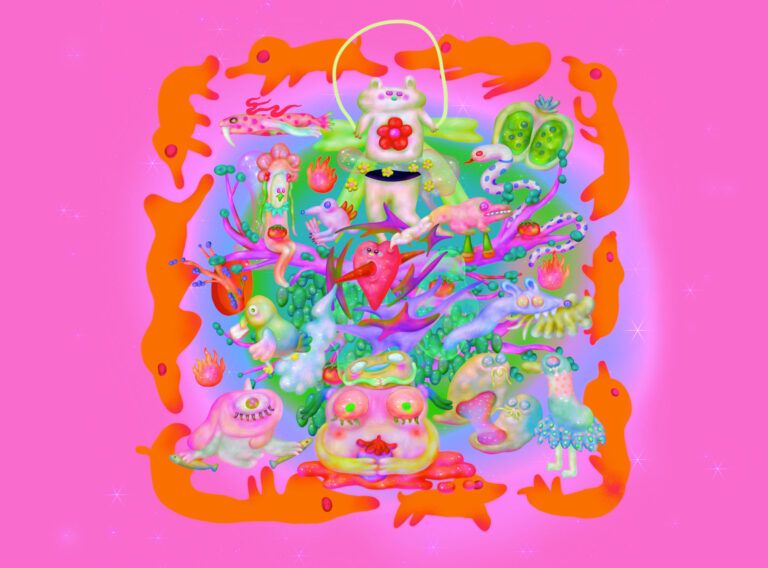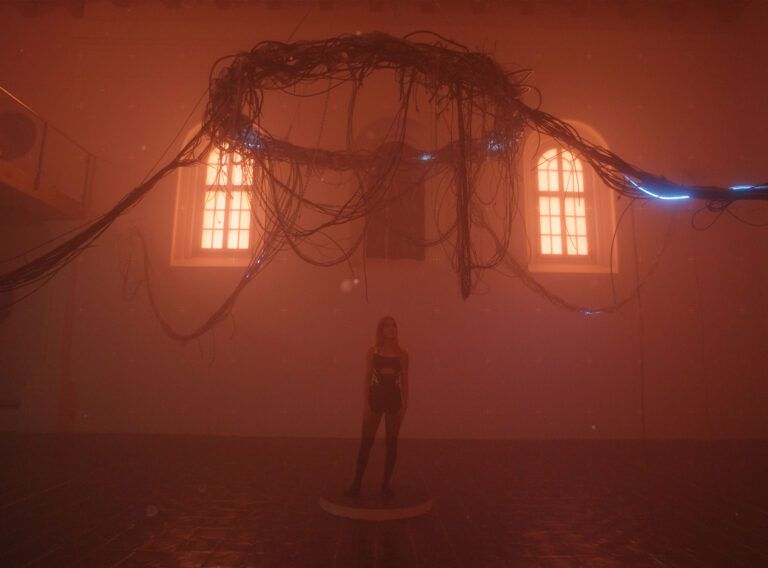What sparked the interest in fashion design?
Since I was a child, I knew that I would pursue a career in creative industries but I had several ideas and changed them more than once. It wasn’t until I was in high school that I came up with something that had actually been obvious for a long time – that among my various interests that came and went, fashion was the one that had been with me for a long time and never left. I was fascinated by the aspect of fashion as a powerful tool for self-expression, shaping personal identity and conveying a narrative through a collection. I don’t know why exactly fashion was so appealing to me but it started with dressing up as a child. In video games, nothing interested me more than character creation. Then there were fashion magazines, albums, and first sketches and naturally, along this path, I wandered into fashion studies.



What challenges have you faced as a young designer, and how have you overcome them?
There are certainly quite a few such challenges. One of them is comparing yourself with other designers or artists. Thanks to social media, we can create the perfect illusion of success. And in reality, we all have better and worse days. Sometimes, we have an art block that is hard to come out of by constantly comparing ourselves with the rest. Meanwhile, you just need to focus on yourself and do your own thing. This is something we need to constantly work on.



Another thing I’ve struggled with until now is obtaining high-quality knitting yarns. I want to incorporate knitwear in my design practice but despite operating in Lodz – the former centre of Poland’s textile industry – the availability of varied quality yarns at retail for smaller brands is quite limited. I hope to develop my brand successfully but still, I imagine creating smaller series, not requiring wholesale orders in large quantities.



And then there’s another challenge that many designers probably struggle with. I think I could manage my time and tasks better. I’m a one-person brand, meaning you must master multitasking. At the moment, I don’t have a problem with it because the demand doesn’t generate much need but sometimes I feel that more hours in a day would be useful. When you are your own boss, a big part of what’s needed is focus and limiting any distractions during working hours – especially social media. Also, I think that if an opportunity arises to join forces with other people, especially from other fields, we should definitely go for it and collaborate.


In today’s digital age, social media platforms overwhelm us with constant content. How do you navigate social media distractions while maintaining your creativity and focus while working on the collection?
When it comes to social media distractions, it’s quite a big concern of mine. Because of the aforementioned time management but also because we are constantly bombarded with information and images. Sometimes very qualitative, sometimes not. The effects of this are multifaceted. On the one hand, such unlimited availability of works by creators from all over the world can stimulate creativity. Everyone can find something for themselves and develop their taste and aesthetics. On the other hand, this quantity can overwhelm. We are tired of scrolling and seeing repetitive content daily. There has been already so much of everything that it is very difficult to be original. Here comes the question – how can one make a breakthrough in the face of this?



Of course, social media can be helpful. They show us certain trends in fashion and more. But I try to keep a certain distance from it and look beyond social media. I like looking into my own memories and interests, looking for different contexts, and mixing references. I think it’s good to look into inconspicuous places and see what you can find. And in the design process, the more we drift off into abstract areas of our minds, the greater the chance for originality. I think this is what creativity in its purest, unfettered form is all about.



How do you stay connected to your cultural roots and heritage, incorporating elements of Polish identity into your designs while embracing a global perspective?
I think my designs are driven by nostalgia. For me, the design process is sometimes a very personal journey, including elements of introspection. This was the case, for example, with the Forget Me Not collection, in which I explore traditions but the smallest ones, close to my family. Most of the collection’s motifs refer to my grandmothers’ homes, one of which I grew up in. I reached for various themes related to my childhood memories. These include details I associate with the Polish market my grandmother used to take me to where you can still see the omnipresent shopping bags with distinctive floral prints. This theme is intertwined with floral motifs in the form of bath sponges, prints made from fragments of family photographs and sewn-on artificial flowers reminiscent of those my grandmother used to grow. In addition, the collection features elements of upholstery fabrics and bedspreads typical of the Polish homes of the 70s-90s, as well as bedding motifs that remind me of laundry drying in the garden and burrowing myself under layers of quilts and pillows.
I wanted the collection to be a vent through which I could unleash creativity at the level of childlike abstraction. Among other things, this is how hybrids of clothing forms with furnishing objects were created, such as the jacket-couch, the dress-quilt, the dress-table, the jacket-pillow, and others. It’s a gesture to revive matter.



Some clothing forms also draw on traditional designs from my grandmother’s closet. However, it was important to me that the collection be fresh and original. Certainly, colour, juggling with motifs, experimenting with forms and incorporating sporty touches were important, in such a way that the collection could also be presented in a performative, playful way, allowing free expression of the body.
I am very happy that my designs could appear during such initiatives as “Fashion Show on the Street” or “Freedom Parade” in Lodz, which involve performing in the urban space, supporting the visibility of fashion in Lodz or activating the local community.
I also like the aspect of transferring colourful motifs from the time of a rather grey Polish reality to designs that now can be featured by people of any gender identity, sexual orientation or body type, who can finally be seen. I think this inclusivity and versatility that I want to maintain in my projects can be indicative of a global perspective.
Besides, I always try to keep my mind open for any inspiration, not only local, from my backyard. This was the case, for example, with the Redrum collection based on Stanley Kubrick’s film “The Shining” or the Void collection, delving into the Jungian theory of the personal shadow.



How do you envision your brand evolving in the coming years?
On my future path, I want to keep growing creatively and explore more topics that allow me to understand not only the world around me but also myself. I want to expand my visual universe and present my works not only in the virtual space but also through shows, presentations and exhibitions. Even smaller, grassroots initiatives involving confronting my works with a local audience give me great satisfaction. I hope that the development of my brand will gain momentum but I would love to have the luxury of reconciling commercial design with an artistic approach.


Besides, I plan to expand my design practice with more knitwear projects. I want to take advantage of computer-aided machine knitting technology, as it offers a lot of possibilities and is extremely inspiring.
In addition, I have been fascinated by digital fashion design for some time and would also like to develop my skills in this direction. 3D software allows you to create a complete situation – from clothing design and character to the environment in which said character is set. For me, it would be a new tool that enables design freed from the constraints of the physicality of matter.





